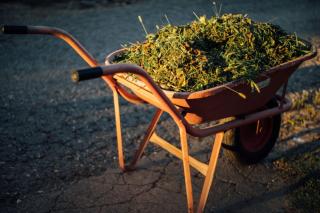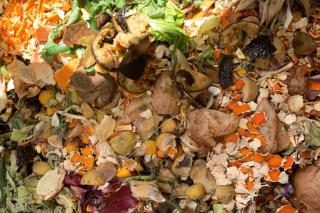

Spring begins, and with it comes baskets and hampers full of lawn trimmings. What is one to do with all these clippings? Can you put lawn grass in the compost?
Well now, though it is possible to add your cut grass in the compost, there are a few rules to follow to get it done right.
 Yes, it’s possible to add cut lawn grass to compost, but there’s a ratio that shouldn’t be exceeded. Indeed, one of the most crucial advantages of compost is that it recycles a wide range of organic waste. You can’t properly compost something if there’s only a single type of waste.
Yes, it’s possible to add cut lawn grass to compost, but there’s a ratio that shouldn’t be exceeded. Indeed, one of the most crucial advantages of compost is that it recycles a wide range of organic waste. You can’t properly compost something if there’s only a single type of waste.
Since lawn clippings contain lots of water, putting too much of them at once in the compost would trigger rotting.
All those bags of clippings are what your lawn has produced with a little water and sun. It’s an amazing source of nutrients that would be a shame to let go to waste.
 The rule of thumb to follow is that lawn grass shouldn’t count for more than 25% of what you add to your compost. This means only one fourth of the content you add to the compost should be lawn clippings.
The rule of thumb to follow is that lawn grass shouldn’t count for more than 25% of what you add to your compost. This means only one fourth of the content you add to the compost should be lawn clippings.
Ideally, you’d even go the extra mile and dry clippings out before throwing them on the pile. The main difficulty with composting lawn grass cuttings is that they contain a lot of water. Drying them out for a day in the sun will already remove more than half the water content. If you’ve got a driveway, spread the grass out on it to benefit from the pavement reflecting heat.
After adding your lawn grass clippings, you’ll get best results if you turn your compost pile and mix it up. Grass clippings tend to compact into very dense clumps. A spading fork is useful for this, but a pitchfork might make the work a bit easier since it’s lighter.
Nutrients for composting bacteria abound, but air and water can’t circulate. When you turn your compost over, you help break the clumps up. Branches and twigs channel air along in the cavities they create. Mixing the pile up will bring grass cuttings and woody parts together, speeding up the breakdown of both.
Once all is said and done, though, it’s difficult to resist the temptation to toss in a few more bagfulls of clippings in the compost. Beware! This might lead to foul-smelling rot in the compost!
Here are two other great uses for lawn grass clippings you can use for whatever portion remains once you’ve added to your compost: